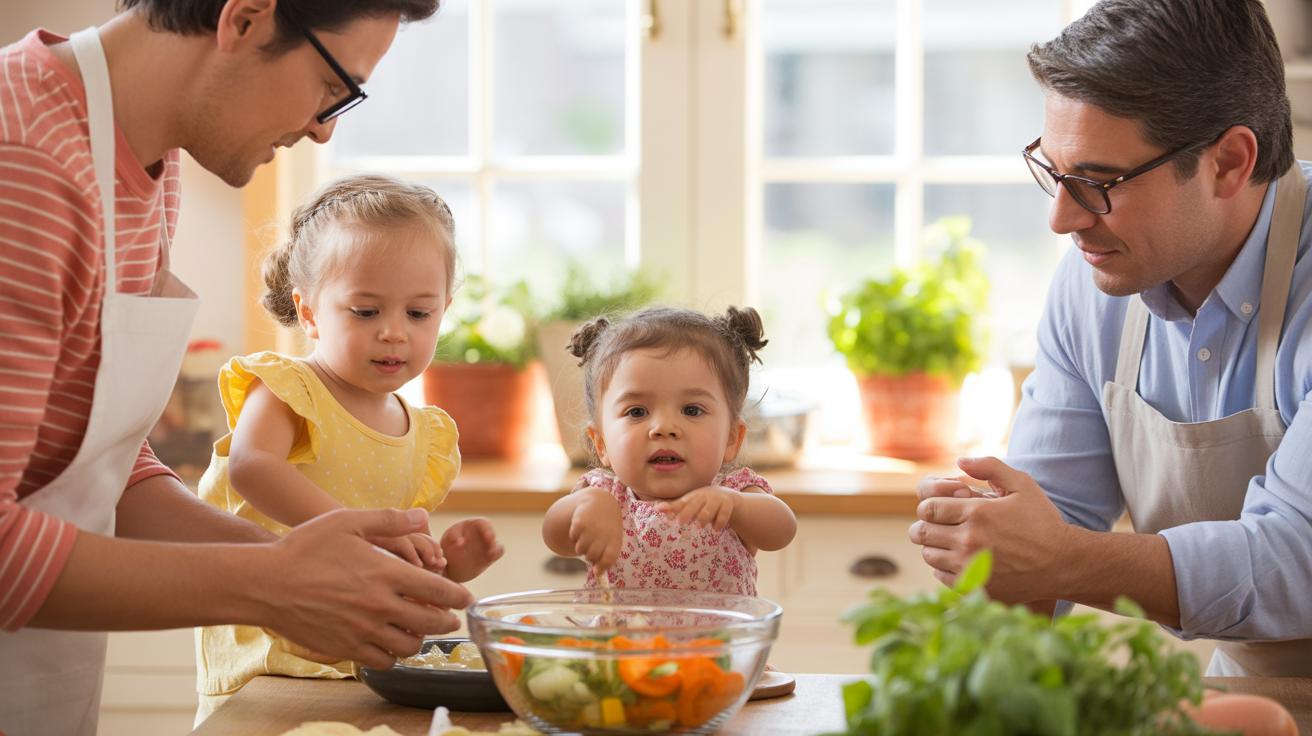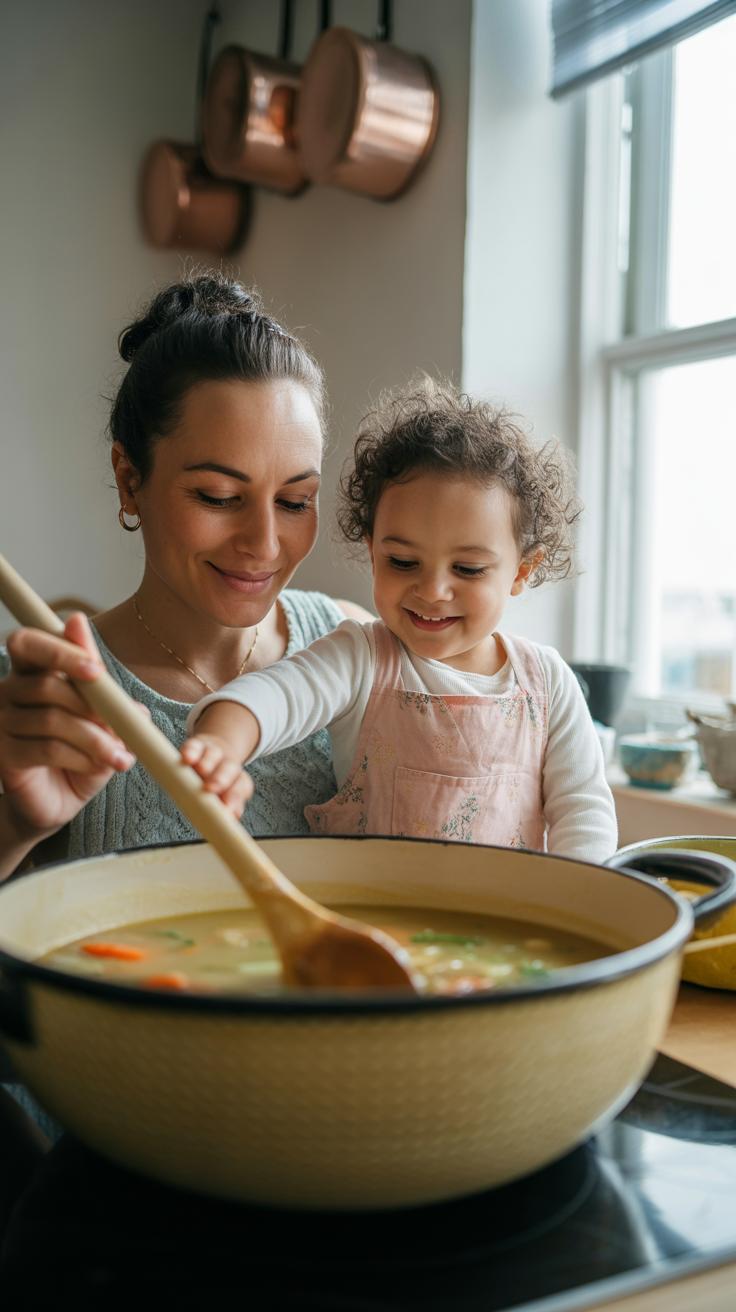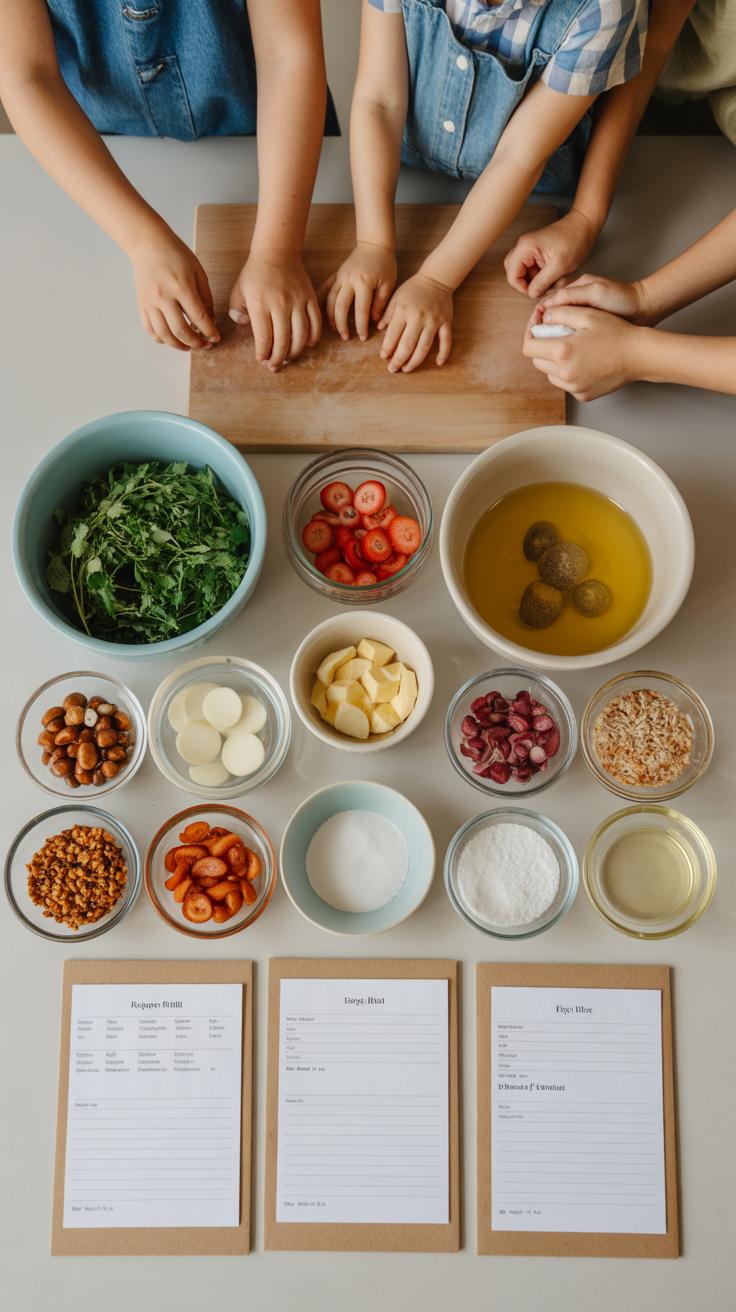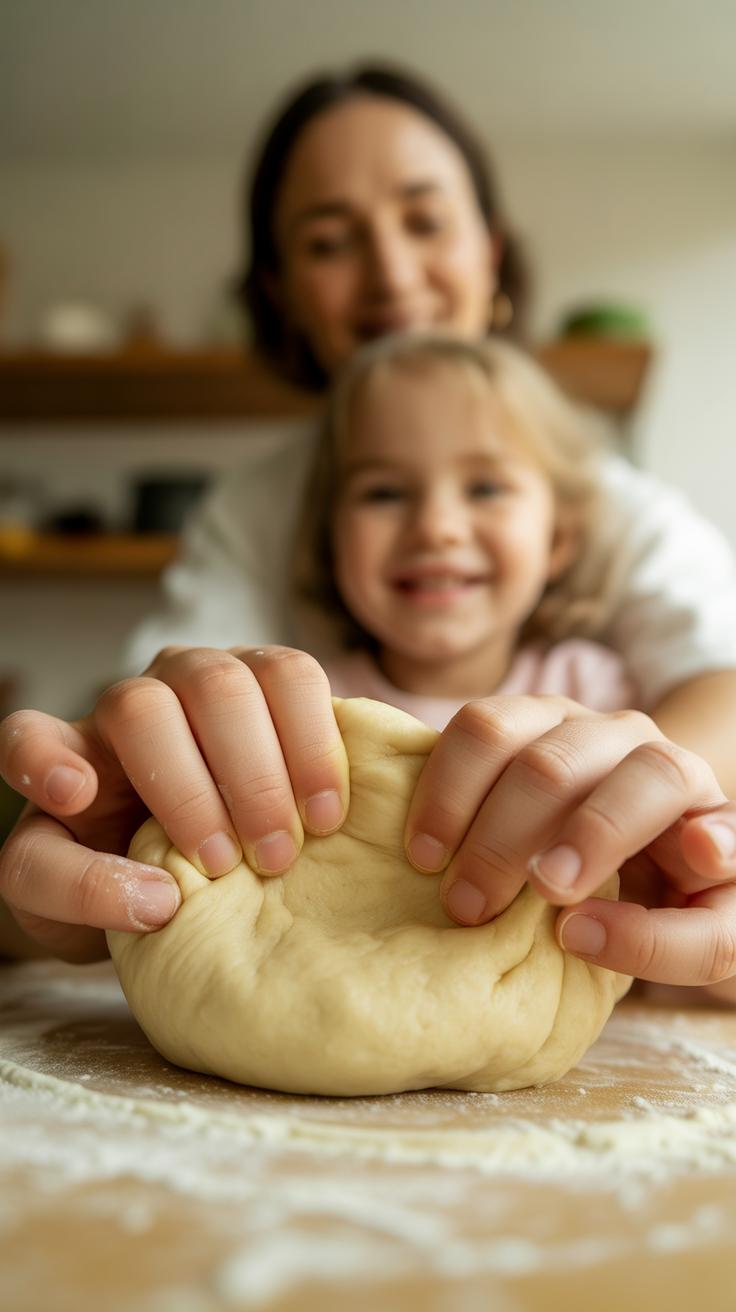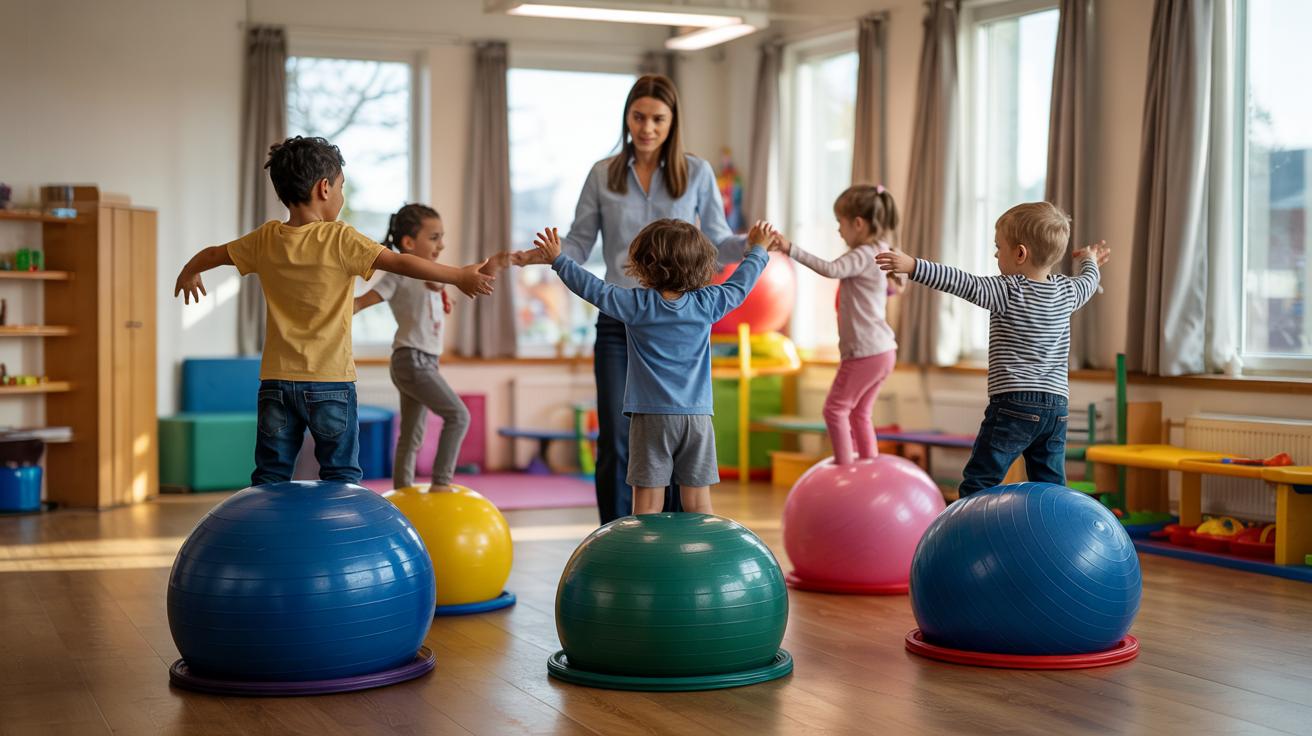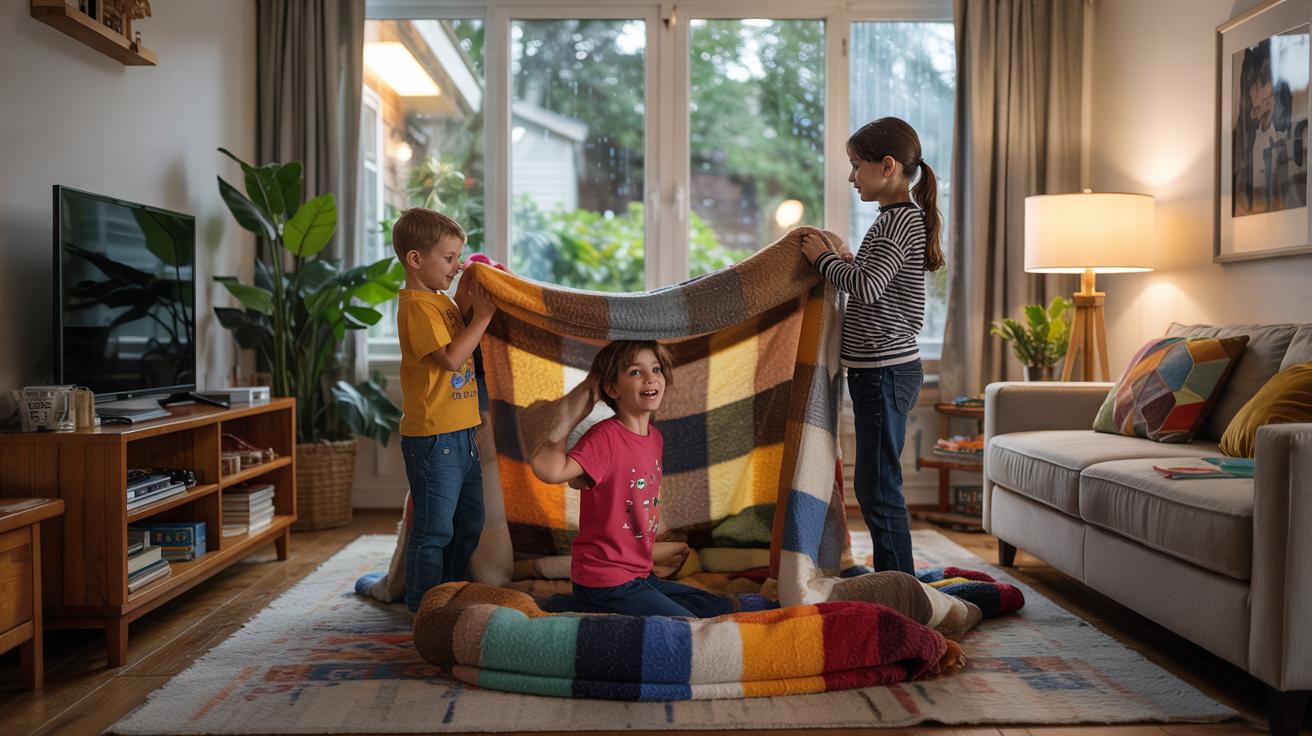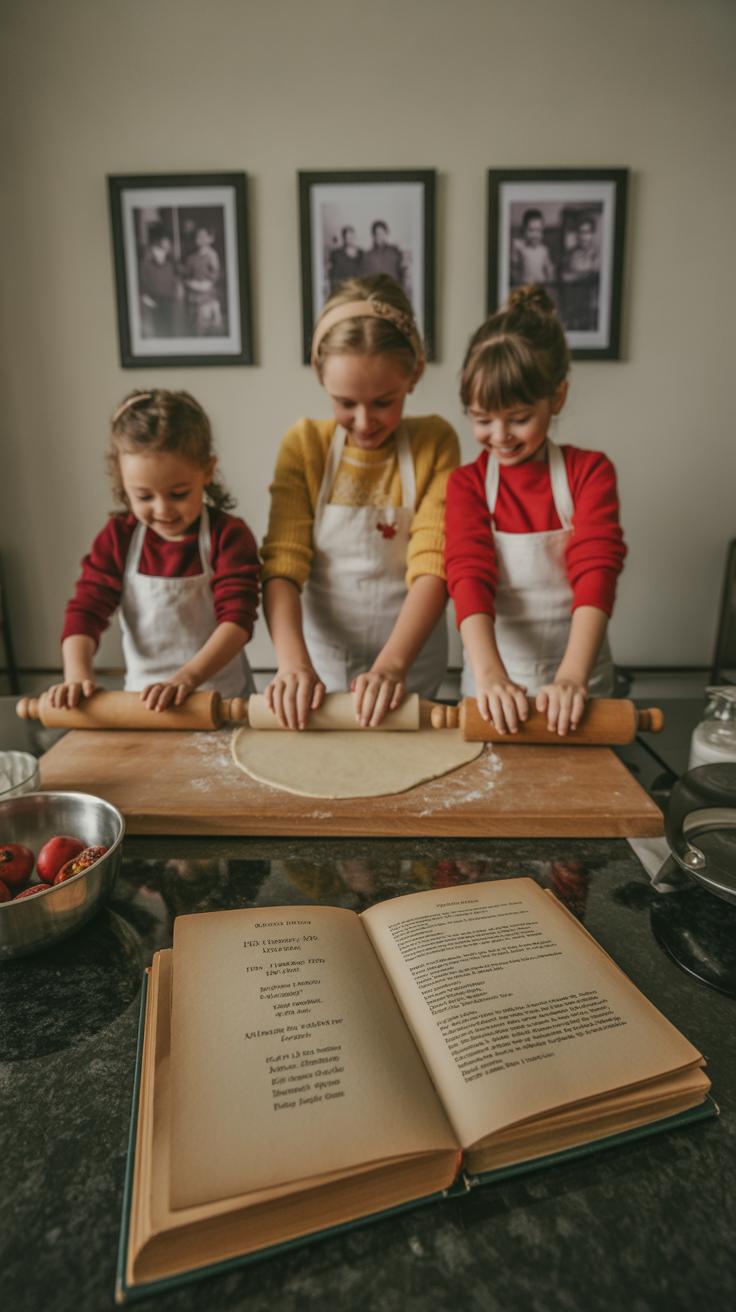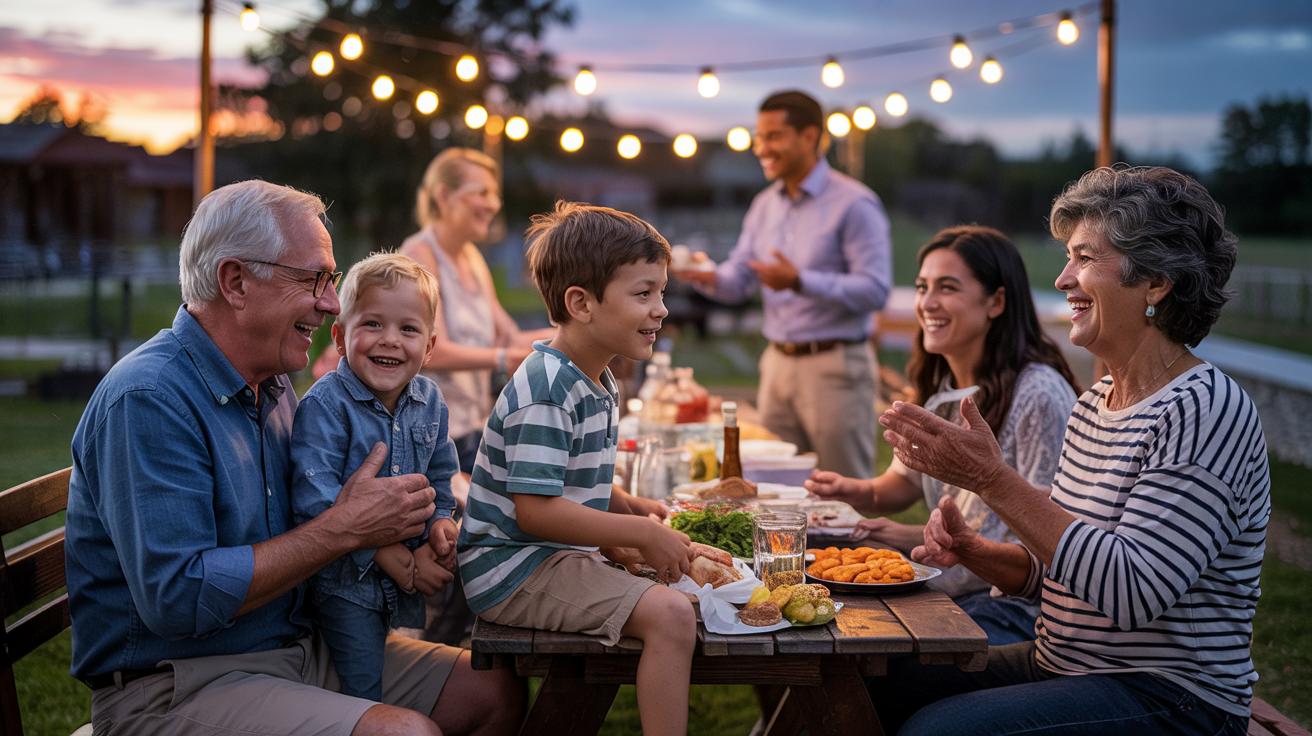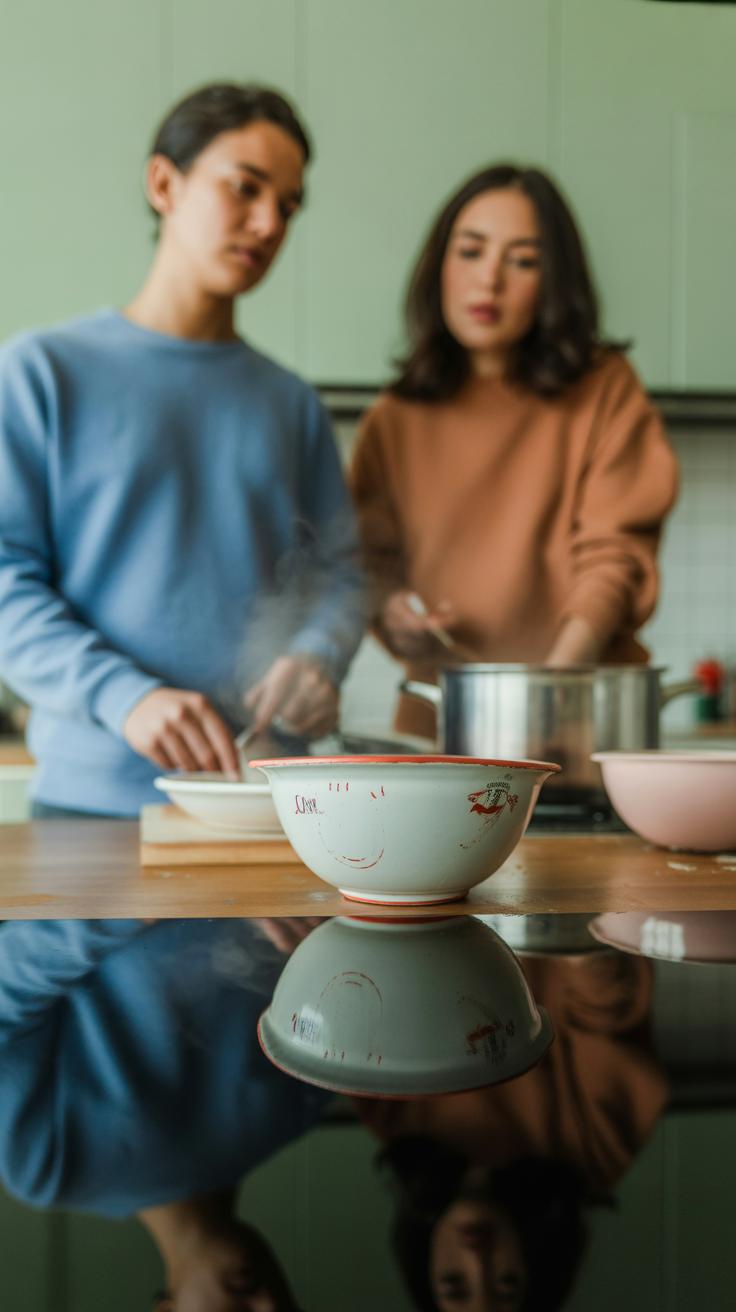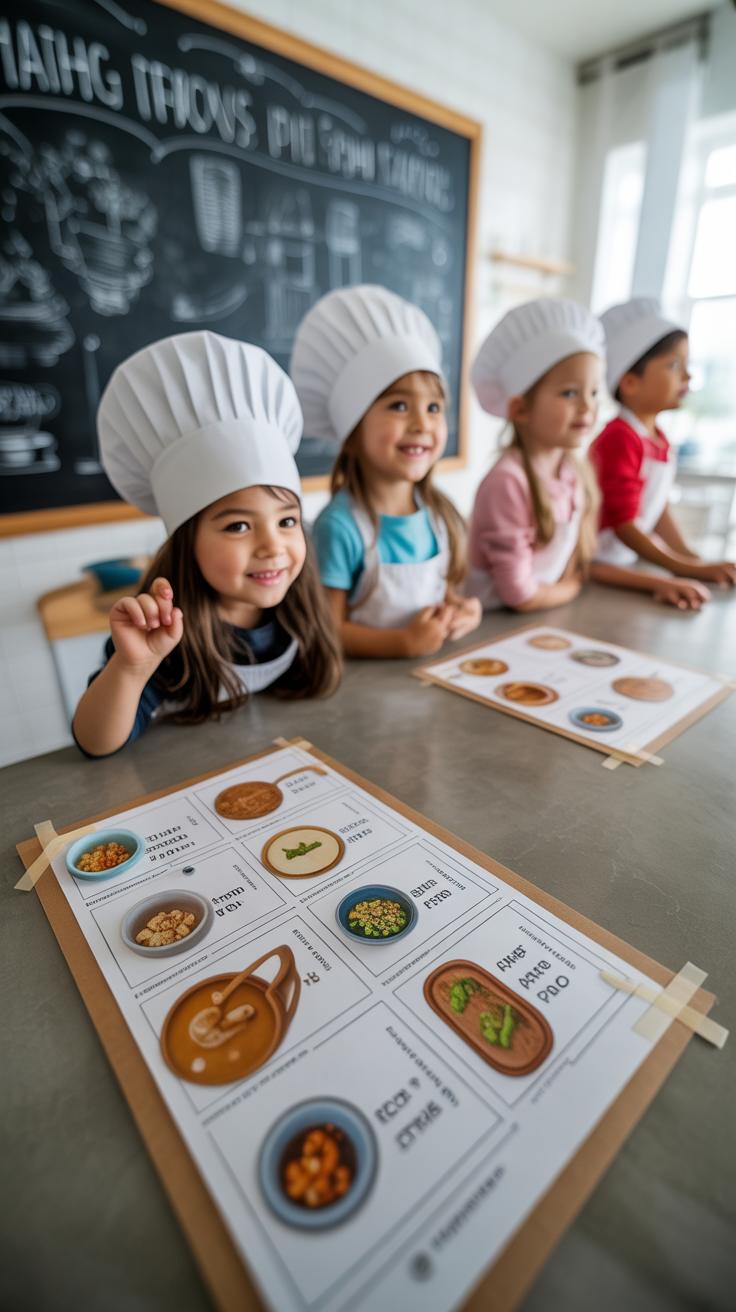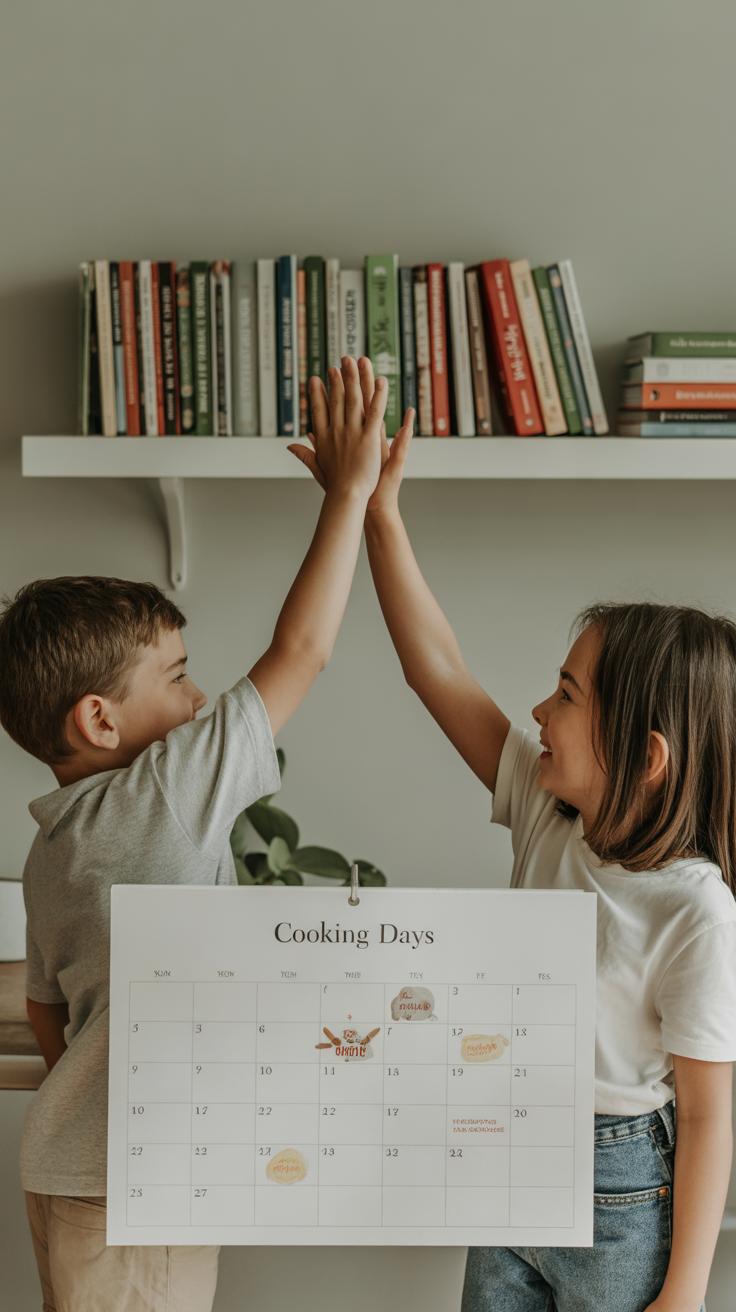Introduction
Cooking together offers more than a way to prepare food. It creates a shared space where family members connect and communicate. Each step in the kitchen encourages teamwork and mutual respect. These moments help build memories you and your family will cherish. When you cook together, you teach important skills to younger family members. You also learn about each other’s tastes and preferences. Preparing meals side by side can turn everyday routines into special occasions. You get to experiment with different flavors and dishes, making mealtime a fun, creative activity. The time spent cooking can boost family unity and improve relationships.
Many families seek ways to strengthen their bonds. Cooking is a practical, enjoyable solution. Preparing a dish together requires cooperation, which naturally promotes teamwork. It offers chances for meaningful conversation and laughter. The kitchen becomes a place where everyone feels involved and valued. Sharing tasty recipes can also introduce cultural traditions and foster understanding among family members. You can explore simple recipes that suit all ages, making cooking accessible and rewarding. This shared activity is a simple yet powerful tool to create stronger family connections while enjoying delicious food.
The Role of Cooking in Family Relationships
Cooking together affects family relationships in many positive ways. When family members prepare meals as a group, they often talk more and share thoughts openly. This improved communication helps solve problems and understand each other better. Working together in the kitchen also builds teamwork skills. As everyone takes on tasks, they learn to depend on each other and balance their efforts.
Shared meals that come from joint cooking efforts create a sense of belonging and emotional closeness. These moments matter in daily life where time often feels rushed. Cooking side by side gives you a chance to slow down and enjoy each other’s company. These quality hours can become memories that support stronger bonds and create a safe space at home.
How Cooking Encourages Family Interaction
Cooking forces family members to interact closely. Tasks like choosing what to cook, chopping ingredients, and stirring pots require teamwork. Family members discuss ingredients, assign tasks, or offer suggestions during cooking, which brings everyone closer. You might find a parent teaching a child to slice vegetables or siblings passing seasoning while sharing stories.
Meal planning encourages conversations about preferences and health, inviting all voices to be heard. Everyone’s role matters, whether it’s washing dishes or setting the table. These shared duties create a lively environment that opens doors for more interaction than usual daily routines allow.
Building Trust and Understanding While Cooking
Trust grows when family members share cooking duties and depend on each other’s abilities. For instance, someone might handle boiling pasta while another focuses on the sauce. Knowing that each person will complete their task builds confidence among all.
Cooking also creates chances to support one another. If a mistake happens, such as spilling sauce, family members can show patience rather than frustration. This support helps build understanding and lowers tension. When you cook together regularly, the kitchen becomes a space of shared effort and care that deepens family trust and respect.
Choosing Recipes That Bring Everyone Together
Pick recipes that everyone in your family will enjoy and can actively help prepare. Focus on dishes with simple steps and flexible ingredients. Ask yourself what foods each family member likes and dislikes, then find common ground. For example, tacos or pasta can be easily customized.
Choose recipes that allow different roles, like chopping, mixing, or setting the table, so each person can join in. Consider meals that do not require complex techniques, making it less stressful and more fun. Think about dishes where kids can safely participate, like assembling sandwiches or stirring batter.
Keep the mood light by selecting recipes that encourage creativity and teamwork. This helps everyone feel included and eager to contribute. Think about meals you can enjoy together, so cooking becomes an event to look forward to, not just a chore. What types of foods bring smiles to your family’s faces?
Simple Recipes For All Ages
Choose recipes with a few easy steps and common ingredients you probably already have at home. Classic examples include homemade pizza with pre-made dough, simple salads, or fruit parfaits layered with yogurt and granola. These dishes need only basic skills like spreading, stirring, or washing vegetables.
Try making pancakes or waffles, where children can pour batter and add toppings. Another idea is to prepare grilled cheese sandwiches, which only require buttering bread and placing cheese between slices. These recipes teach kids how to follow instructions and build confidence.
Simple meals like baked potatoes with various fillings or pasta with tomato sauce invite creativity. They are also quick to make, helping you preserve family time. What easy recipes have your family enjoyed making together?
Involving Everyone with Suitable Tasks
Give each family member a cooking task based on their age and skills. Younger kids can wash vegetables, tear lettuce, or mix ingredients in a bowl. Older children or adults can handle chopping, measuring, or cooking on the stove.
Assign tasks that match abilities to keep everyone engaged and safe. For example, a five-year-old might spread butter on toast, while a ten-year-old could help crack eggs or grate cheese. Such roles build pride and encourage learning.
This approach creates a sense of teamwork. When everyone contributes, the meal feels like a shared accomplishment. How can you divide tasks to make cooking a positive experience for all members of your family?
Benefits of Family Cooking for Children
Involving children in family cooking offers more than just preparing meals—it supports their growth in many ways. When kids help out, they learn responsibility by managing tasks like washing vegetables or setting the table. These duties teach them to be dependable and contribute to the household.
Cooking also improves their eating habits. Kids who cook tend to try new foods and appreciate a variety of flavors. They gain insight into what goes into their meals and understand the importance of nutrition.
Learning cooking skills early builds their confidence. Mastering steps like stirring, chopping with supervision, or measuring ingredients makes them feel proud and capable. This process encourages creativity, too, as children experiment with flavors and combinations.
How often do you invite your kids to help in the kitchen? This simple act can inspire curiosity and help them develop practical skills while strengthening your family bond.
Developing Life Skills in the Kitchen
Cooking introduces children to valuable skills like measuring ingredients, following step-by-step instructions, and practicing kitchen hygiene. When a child measures flour or water accurately, they improve math skills and attention to detail.
Following a recipe helps them develop patience and focus. Children learn to read and interpret instructions clearly, which mirrors many tasks in school and daily life.
They also discover the importance of cleanliness by washing hands before cooking and cleaning up after. These habits nurture self-reliance, making them more capable in everyday activities beyond cooking.
Teaching your child how to safely handle kitchen tools and ingredients lays a foundation for independence. What skills could your child build today by joining you in the kitchen?
Encouraging Healthy Eating Habits
When children help prepare meals at home, they become more open to trying different foods. Exposure to a variety of ingredients demystifies unfamiliar items and makes eating healthier easier.
Hands-on cooking encourages kids to ask questions about nutrition and the benefits of each ingredient. They learn which foods fuel their bodies and why balance matters.
Sharing responsibility in meal preparation builds respect for home-cooked food over fast or processed options. Children feel ownership of their meals and are more likely to make healthier choices over time.
How might your family’s eating habits improve by inviting kids into the kitchen to cook together?
Creating Memorable Family Cooking Traditions
Cooking together helps your family build traditions that last. When you regularly prepare meals as a group, you create moments your family will remember. These shared experiences give everyone a sense of belonging and comfort. What family recipe do you think will be remembered for years to come?
Try making cooking sessions an event everyone looks forward to, not just a task. Pick special recipes for birthdays or holidays. This repeats patterns that family members will cherish and pass to younger relatives.
You can set simple routines, like starting with a salad every Sunday or baking bread monthly. Make sure every member has a role, from washing veggies to stirring the pot. These habits build participation and keep the tradition alive.
Think about which recipes represent your family’s story. Could you cook dishes connected to your heritage or favorite memories? These ideas help create rituals that strengthen family bonds and connect generations.
Making Cooking a Weekly Family Event
Picking a night each week to cook together turns a meal into shared quality time. This regular plan brings everyone together with something to look forward to. How could you set up a family cooking night in your home?
Assign roles like chopping, measuring, or setting the table. This lets everyone contribute based on their skills and interest. Sharing tasks encourages teamwork and respect.
Rotating the choice of dishes builds excitement and lets each family member shine. It creates a sense of anticipation that strengthens connection beyond the kitchen.
Seeing your family enjoy food made together changes a routine dinner into a meaningful event. This habit helps family members strengthen their ties with every shared meal.
Documenting Recipes and Moments
Keeping a family recipe book or photo journal preserves more than just instructions. It captures stories behind dishes and the smiles that happened while making them. Do you remember a funny or special cooking moment to write down?
Invite everyone to add their favorite recipes, photos, or notes. Children can decorate pages or record what they learned. This involvement makes everyone feel included.
Your collection becomes a keepsake to share with future generations. It passes down not only food but memories and family history.
Regularly reviewing your journal reminds your family of happy times and motivates you to keep cooking together. This simple practice turns meals into a living legacy.
Overcoming Challenges When Cooking Together
Cooking together strengthens family bonds, yet it often presents common challenges. Different tastes can lead to disagreements about what to prepare. Address this by choosing flexible recipes that allow each person to customize their plate, like build-your-own tacos or pasta with various sauces. This approach respects preferences and makes meals more enjoyable for all.
Limited kitchen space can make it hard for everyone to participate. Arrange tasks that do not require much room, such as chopping veggies or mixing dough at separate counters. Set up clear zones for specific activities to reduce crowding and prevent accidents.
Time constraints often limit shared kitchen moments. Prioritize recipes with simple steps and short cooking times. Prepare some ingredients in advance. Set a specific day or time for cooking sessions to turn it into a regular family routine. How can you adjust your schedule to make cooking a family event?
Managing Different Preferences and Dietary Needs
Families often include members with varying tastes and dietary needs. Start by having an open conversation about everyone’s preferences before choosing recipes. Respect allergies, vegetarian choices, or other restrictions by selecting recipes that can be easily adapted, such as vegetable stir-fry with optional protein additions.
When cooking, prepare ingredients separately when needed to accommodate differences. For example, keep sauces or seasonings on the side, so each person adds what suits them. Use alternative ingredients like gluten-free pasta or dairy substitutes if necessary. Clear communication keeps the kitchen atmosphere positive and inclusive.
Ask yourself, how can you ensure everyone feels involved while respecting their needs? Encouraging each family member to suggest dishes helps create a menu that caters to all.
Organizing the Kitchen to Accommodate Everyone
Effective kitchen organization lets the whole family cook together without feeling cramped. Clear the workspace of unnecessary items to create more room. Use containers or baskets to keep utensils and ingredients organized and easy to reach.
Arrange tools and supplies by station—for example, a chopping area, a mixing spot, and a cooking zone. This way, several people can work simultaneously without getting in each other’s way. Consider using adjustable stools or step stools for younger family members to reach counters comfortably.
Check if your kitchen layout allows freedom of movement between tasks. Can you add extra workspace by using a portable table or cutting board over the sink? Small adjustments help everyone work side by side smoothly and make cooking together less stressful.
Recipes That Foster Family Bonding
Choosing the right recipes can turn cooking into a shared adventure that brings your family closer. Meals that invite teamwork allow each member to contribute based on their skills and interests. Consider dishes that offer choices, so everyone can adjust ingredients to their taste.
Recipes like build-your-own sandwiches or customizable salads let kids and adults alike pick what goes on their plate. This variety sparks conversations about preferences and encourages collaboration. Also, recipes with simple steps mixed with some that challenge the more experienced cooks help balance participation.
Have you ever tried a recipe where each person takes charge of one part, like chopping, mixing, or seasoning? Sharing these roles keeps everyone engaged and prevents kitchen frustration. When you cook this way, meal preparation becomes a cooperative activity, not a chore.
Hands-On Recipes Like Pizza and Tacos
Pizza and tacos invite creativity while involving everyone in the process. Making pizza starts with spreading sauce, adding cheese, and choosing toppings. Each step allows family members to express themselves through food. Tacos follow a similar pattern with fillings and toppings laid out for assembly.
These recipes require active participation, sparking conversations about flavors and combinations. You can challenge each other to create unique pizzas or tacos, turning cooking into a fun game. This shared activity encourages teamwork and gives every person a role, no matter their age or skill.
Have you noticed how interactive meals like these make people linger longer at the table? Preparing food together often leads to better mealtime conversations and stronger connections.
One-Pot and Slow Cooker Meals
One-pot and slow cooker recipes simplify the cooking process, making it easier to involve everyone. These meals usually need less prep work and cleanup. Your family can work together by adding ingredients in stages or stirring at set times.
For instance, a slow cooker stew or a one-pot pasta lets you assign tasks like chopping vegetables or measuring spices. These meals foster collaboration and give a sense of shared accomplishment when everyone gathers to enjoy the finished dish.
Do you want to avoid long cleanup sessions? These recipes keep your kitchen tidy, so you can focus more on enjoying the time with your family. Plus, the slow cooker’s slow cooking helps develop flavors, creating a cozy meal that everyone will appreciate.
Making Cooking Fun and Educational
Cooking together provides a natural chance to make learning enjoyable. When your family shares kitchen tasks, you create moments that boost curiosity and skills at the same time. Turning cooking into a game or challenge can keep everyone interested and eager to participate.
Simple quizzes about ingredients or why certain steps matter bring excitement to the process. How about timing tasks or competing to chop vegetables the safest and fastest? Such activities push family members to focus and improve all while sharing laughs.
Adding facts about the food you use teaches healthy habits without boring lectures. Explaining what vitamins are in carrots or how yeast makes bread rise makes meals more meaningful. When you tie learning to action and fun, your family stays engaged longer and grows closer through shared knowledge.
Cooking Games and Challenges for Families
Try a game where each person guesses an ingredient by smell or texture before using it. Time your efforts making pizza dough or decorating cupcakes. You can turn meal prep into a race, with small prizes for the winner, like picking the next recipe.
Challenges like building the tallest sandwich or creating the best salad encourage creativity. These activities break monotony and motivate family members to try new skills. Even young children enjoy simple tasks like stirring or washing veggies when presented as part of a fun contest.
Teaching Nutrition and Food Science
While cooking, explain why some foods help your body grow strong and others provide energy. Use easy examples: carrots have vitamin A that helps eyes, and bananas give quick energy. Demonstrate what happens when you mix baking soda and vinegar while preparing a cake or pancakes.
You could ask, “What do you think this egg does in the recipe?” It teaches the role of ingredients beyond taste. Offering little facts along the way makes nutrition and food facts stick better. This knowledge encourages smarter food choices, turning family cooking time into healthy lessons everyone remembers.
Keeping the Momentum Going After the First Experience
You have just enjoyed your first family cooking session. Now, how do you keep it going? Maintaining regular cooking together takes some planning and teamwork. Start by setting clear goals that everyone agrees on. These goals can be as simple as trying new recipes each week or learning to make a favorite dish from scratch. When every person knows what you want to achieve, it keeps interest alive.
Rotate roles in the kitchen so everyone feels involved. One week, your child can be in charge of chopping vegetables; another, they can stir or set the table. This variety prevents boredom and helps each family member develop new skills.
Plan menus ahead of time. Decide what meals you want to cook together or allow family members to pick the dish they want to try. Having a plan helps avoid last-minute stress and keeps your cooking sessions on track.
Don’t forget to celebrate your successes. Did everyone finish dinner together? Did you master a new recipe? Share your accomplishments and encourage each other. A small party or sharing photos of your meals can boost motivation for the next session. What goal will your family set for the next cooking night?
Setting Realistic Cooking Goals Together
Clear, shared goals help the whole family stay focused. What do you hope to get from cooking together? It might be improving cooking skills, eating healthier, or simply spending more time together. Setting realistic goals means everyone understands what to expect and can commit to it.
Break big goals into smaller steps. If trying new recipes feels overwhelming, start by mastering simple dishes. Agree on how often to cook together, such as once a week or every other weekend. Keeping goals achievable keeps interest high.
Talk openly about what each person wants to learn or contribute. Maybe someone wants to bake bread, while another wants to perfect a pasta sauce. When goals reflect family members’ interests, everyone feels more motivated to participate.
Celebrating Cooking Achievements
Recognizing your family’s cooking milestones makes the experience rewarding. After completing a challenging recipe or cooking several sessions in a row, celebrate together. This could mean having a special dessert, hosting a mini dinner party, or simply sharing compliments around the table.
Create a fun tradition, like a “chef’s award” or a cooking journal where you record your progress and favorite dishes. Display photos or write down new recipes to remind everyone of the fun times in the kitchen.
Celebrations encourage repeat participation. When family members feel appreciated and proud of their efforts, they want to join again. How will you celebrate your next cooking achievement?
Conclusions
Cooking together builds more than just tasty meals; it lays foundations for stronger family bonds. Every shared recipe and each collaborative step deepens the connection you have with your loved ones. The kitchen becomes a space of cooperation, learning, and joy. Kids and adults alike gain valuable life skills and enjoy quality interactions. When your family cooks together regularly, you create a tradition filled with warmth and partnership. Such rituals bring families closer and improve everyday communication, fostering a supportive home atmosphere where everyone feels appreciated.
Delicious recipes prepared as a team do more than satisfy hunger. They open doors for sharing stories, laughter, and encouragement. The time invested in cooking together pays off by strengthening trust and understanding within your family. You develop memories that last a lifetime, and meals become moments to celebrate both food and family. Consider inviting everyone into the kitchen to build these rewarding experiences. Cooking together turns ordinary days into opportunities for connection, making family life richer and more fulfilling.

